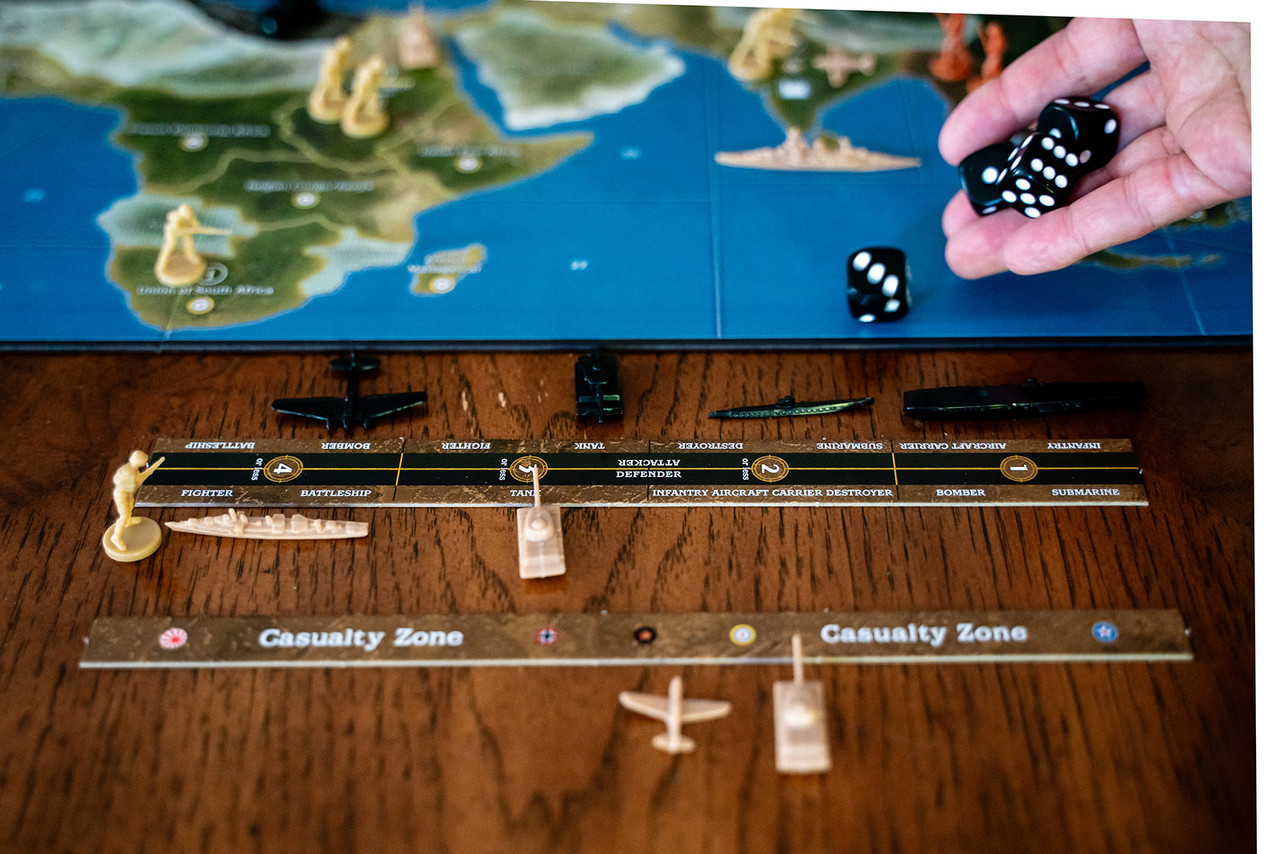This is an unauthorized fan variant of Axis & Allies 1941 solely intended for those who find that the game played Rules As Written is too long or too complex for players at their table. If you’re happy with the current rules, or have house rules that increase complexity, this is not for you.
- Hypothesis: The complexity of Axis & Allies comes not from unit counts but from having to forecast your own turn. You begin your turn by purchasing units that won’t be placed until the end of your turn, forcing you to think through combat moves and anticipate how they will go and guess what you will need as a result.
- Hypothesis: Fleets are fun. All those ship units are fun, but they are too expensive to buy, and poor Russia has the only two industrial complexes on the map that can’t place ships.
- Hypothesis: Unit abilities are convoluted. Ships can’t move through sea zones with hostile surface ships, except for submarines, except when destroyers are present. An infantry can move 1, unless it moves onto a transport, in which case it can move a second time. A sub in battle can do a surprise strike as well as avoid air hits, unless an enemy destroyer is present, unless that enemy destroyer is from a different nation, unless defending. A transport is never part of battles but gets destroyed immediately, etc.
- Hypothesis: Wartime innovation changed the rules. A deck of 67 Technology Cards leans into how dynamic combat was over the years, while enhancing replayability.
In 1941 ABC, turn order has been simplified to ABC: Advance your units (whether into combat or not), Battle, then Create and place new units. Since new players, even old hands, of Axis & Allies often try to do non-combat moves at the same time as combat moves, this is the default.
Since the limit on the number of units that can be produced in a region already discourages infantry stacking, prices are discounted (roughly divided by 3): infantry cost 1, tanks and submarines cost 2, destroyers and transports cost 3, fighters and bombers cost 4, carriers cost 5, and battleships cost 6. To further discourage infantry stacking, income not spent is lost. As a result, Germany’s income of 12 and ability to produce 4 units means it would never produce 4 infantry (wasting 8 income): it might want to produce a battleship, fighter, and 2 infantry or instead a bomber, a fighter, and 2 tanks. (Bonus: you’re less likely to need those cardboard chits to represent stacked units.)
Special abilities of units have been streamlined and systematized, and in the process amped up. All abilities are now given a name, shown on a summary table, and called out and documented in the rules.
- Transports now attack and defend at 1. Think of them as escorted convoys. No more special rules about what type of ship they are and how to remove them as casualties.
- Both transports and carriers can take up to two units: any mix of tanks and infantry for transports, and any mix of fighters and bombers for carriers!
- Subs should be fun, and destroyers shouldn’t take that all away! Submarine and anti-submarine rules have been streamlined.
- No more need to track the movement allowance of individual planes and recall where they were several phases ago: they have a range (shortened by 1) then optional final movement after a battle.
I hope you enjoy playing 1941 ABC as much as my son and I enjoyed making it.
Miscellaneous:
- You can comment on the rules.
- Here are the cards if you want to adapt them. The art was licensed from The Noun Project (for which I have an annual subscription).
Photo credit: Promotional photo copyright 2023 by Renegade Game Studios.

